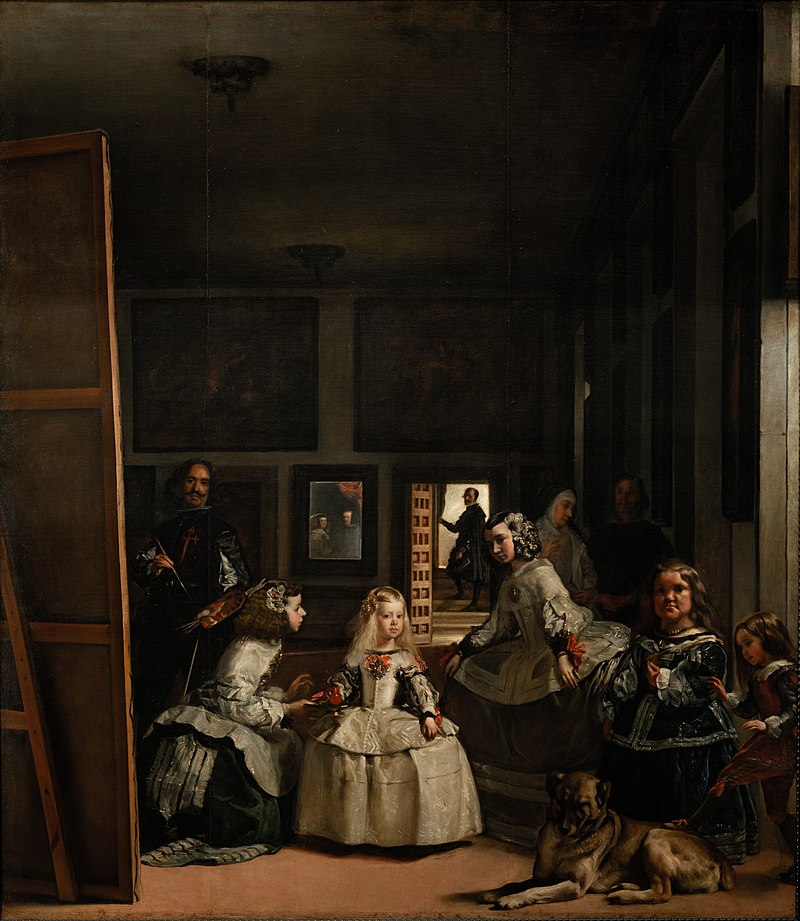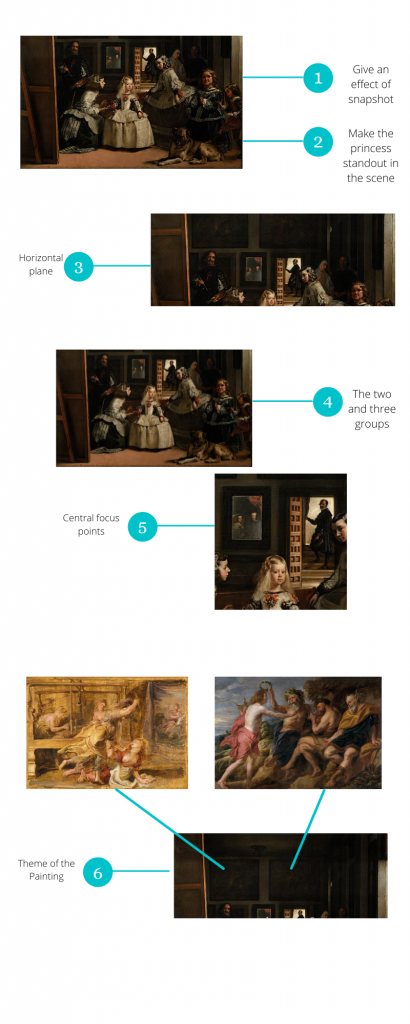


Goal- Make the princess standout in the scene.
Solution - Velazquez creates a pair of two (also male and female pairs) that makes the princess standout. From the right, we have the male and female dwarf, 2 chaperones, curtsying maid and the palace official in the back corridor, the king and the queen in the mirror, Velazquez and the maid kneeling to offer the princess a drink. There is also group of threes, the princess with her 2 maids, the dog and the 2 dwarf, the 3 palace officials
Goal- Draw the entirety of the paintings 3 dimensional space
Solution - The last 6 characters in the back are placed on the same horizontal plane. Our eyes is drawn from Velazquez in the foreground to the palace official as they are in similar black dress and stand in line with the 2 doorways on the back walls. The chaperones in the middle ground link to the king and the queen in the background which simultaneously brings the z-axis all the way forward beyond the picture itself intimating the depth that we cant see.
Goal-Make the painting ambiguous making the viewer waver between multiple centers of weight
between multiple centers of weight
Solution - Have 3 focus points unlike Davinci's last supper where all the elements points to Christ. The elements having maximum light are the 1) Princess 2)The mirror and the 3) Palace official which also becomes a group of 3 as the mirror and the door are in the same horizontal frame.
Goal- He wanted this painting to be about painting itself. During Velasquez's time painting didn’t hold the same kind of noble place as poetry and music. He wanted this painting to be a vigorous argument for the virtue of paining weather it comes form heave or lifelong practice of craft
During Velasquez's time painting didn’t hold the same kind of noble place as poetry and music. He wanted this painting to be a vigorous argument for the virtue of paining weather it comes form heave or lifelong practice of craft
Solution - A closer look for the image reveals that the vanishing point of this painting is not the mirror but the lighted doorway to the right. So the mirror doesn't directly reflect back at us but instead the canvas that Velasquez is working on.
The two paintings on the upper half are the copies of Peter Paul Rubens who was a hero to Velasquez. Both tell similar stories from Ovid's Metamorphosis. In the right mortal Marsyas challenges the god Apollo to a flute playing contest and in the left god Athena challenges Arachne to a weaving contest. These are two contest between mortals and gods on the subject of arts and in the end both are punished by their gods for failing to recognize the divine source of artistic endeavor.